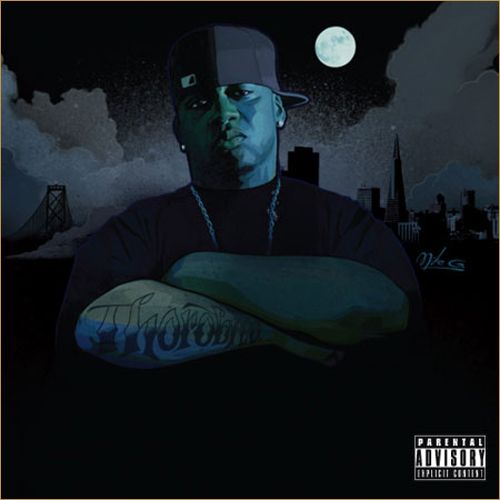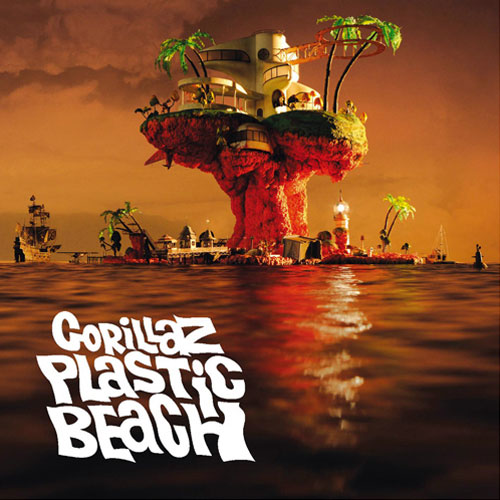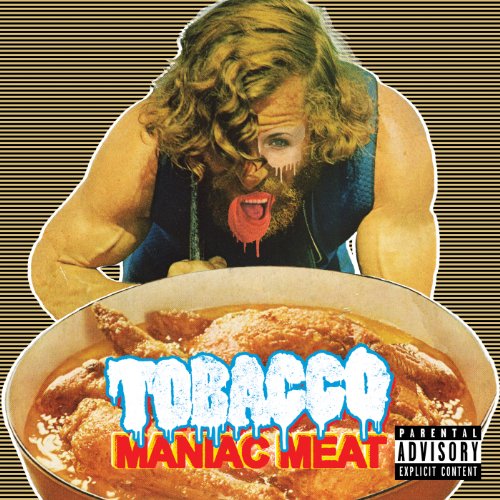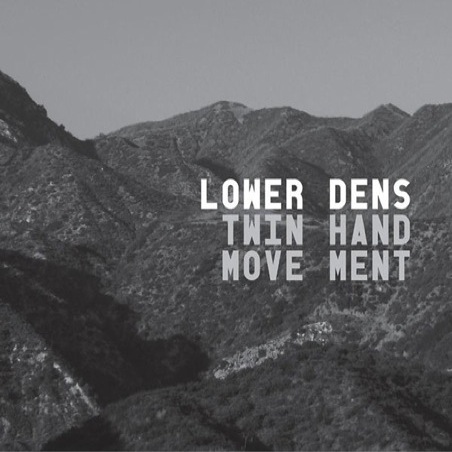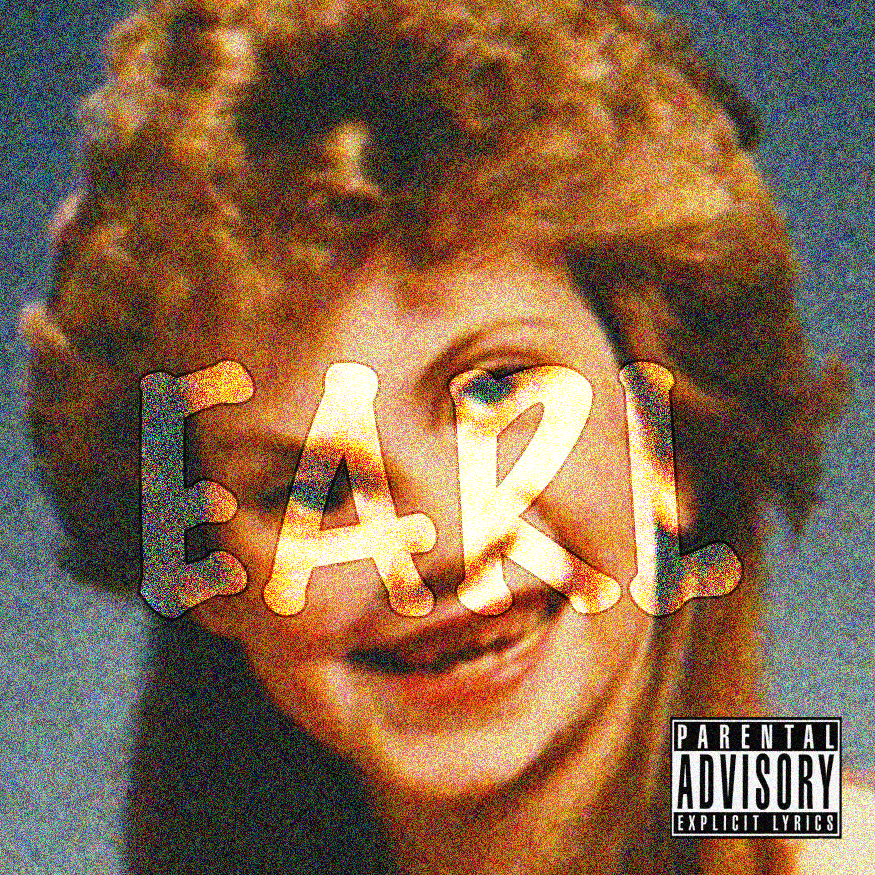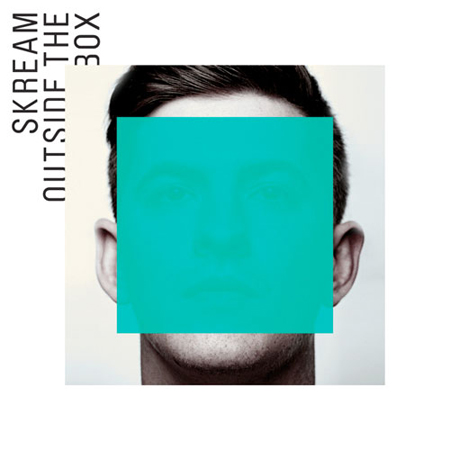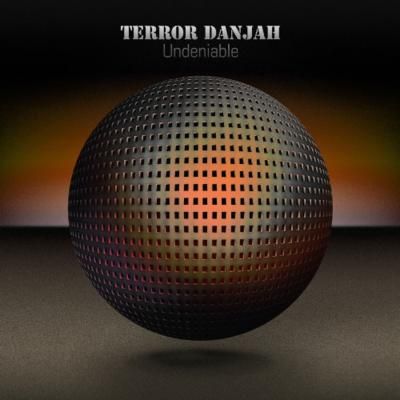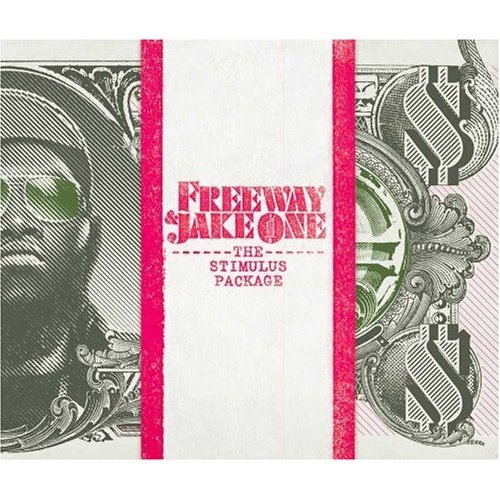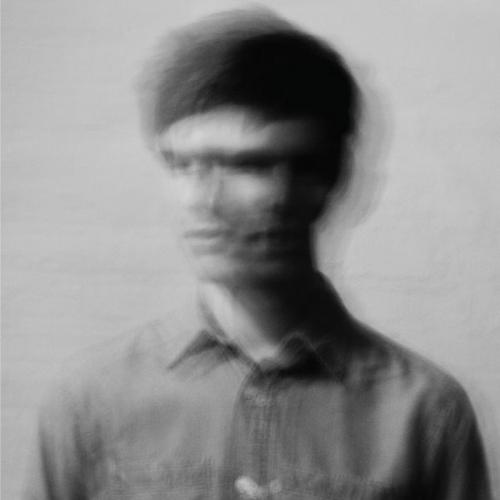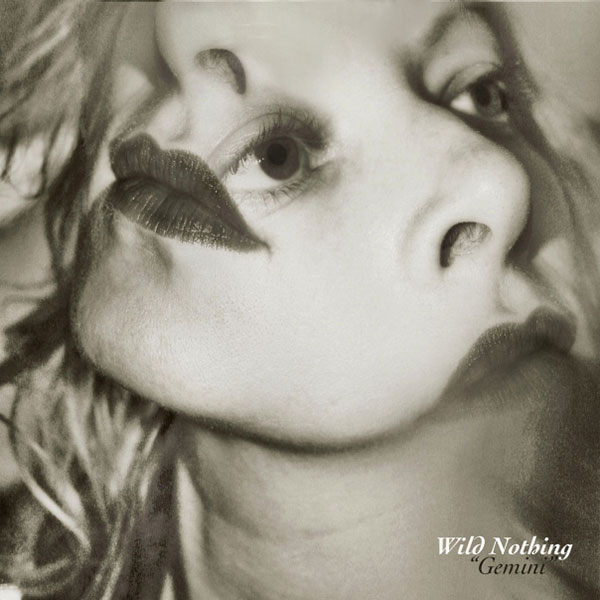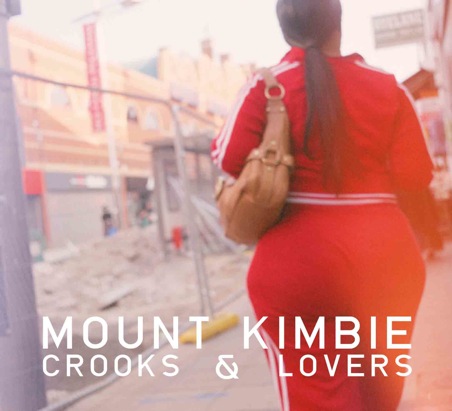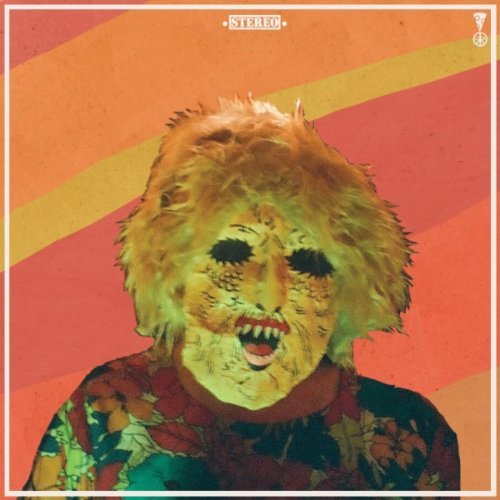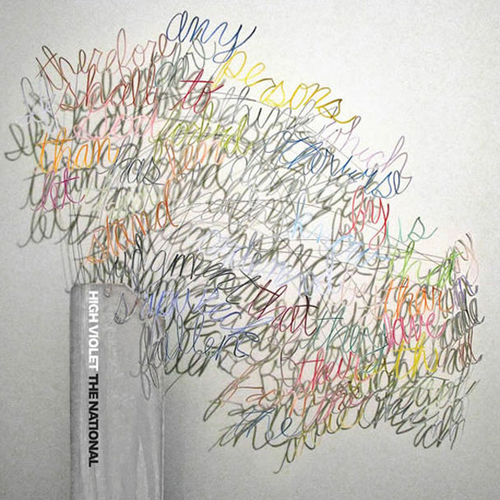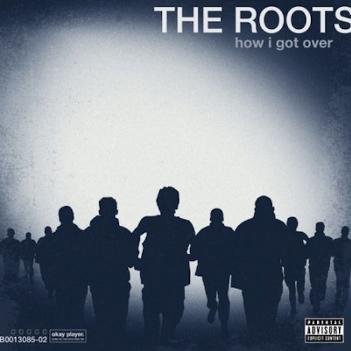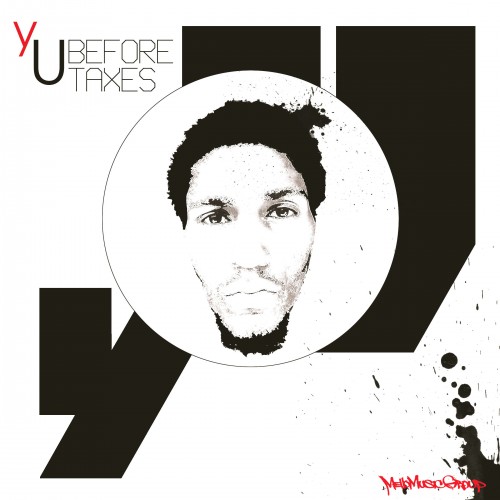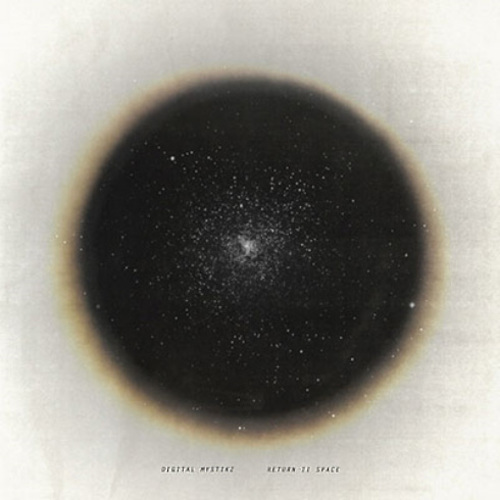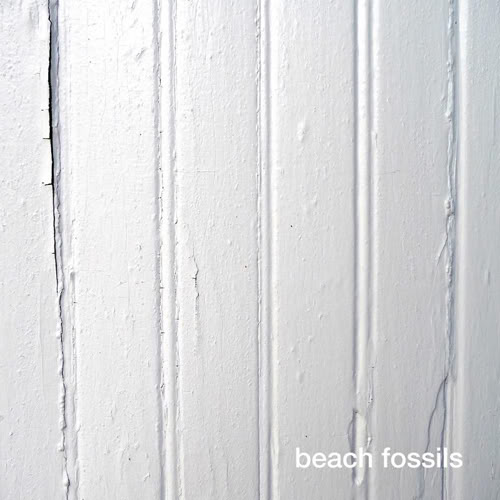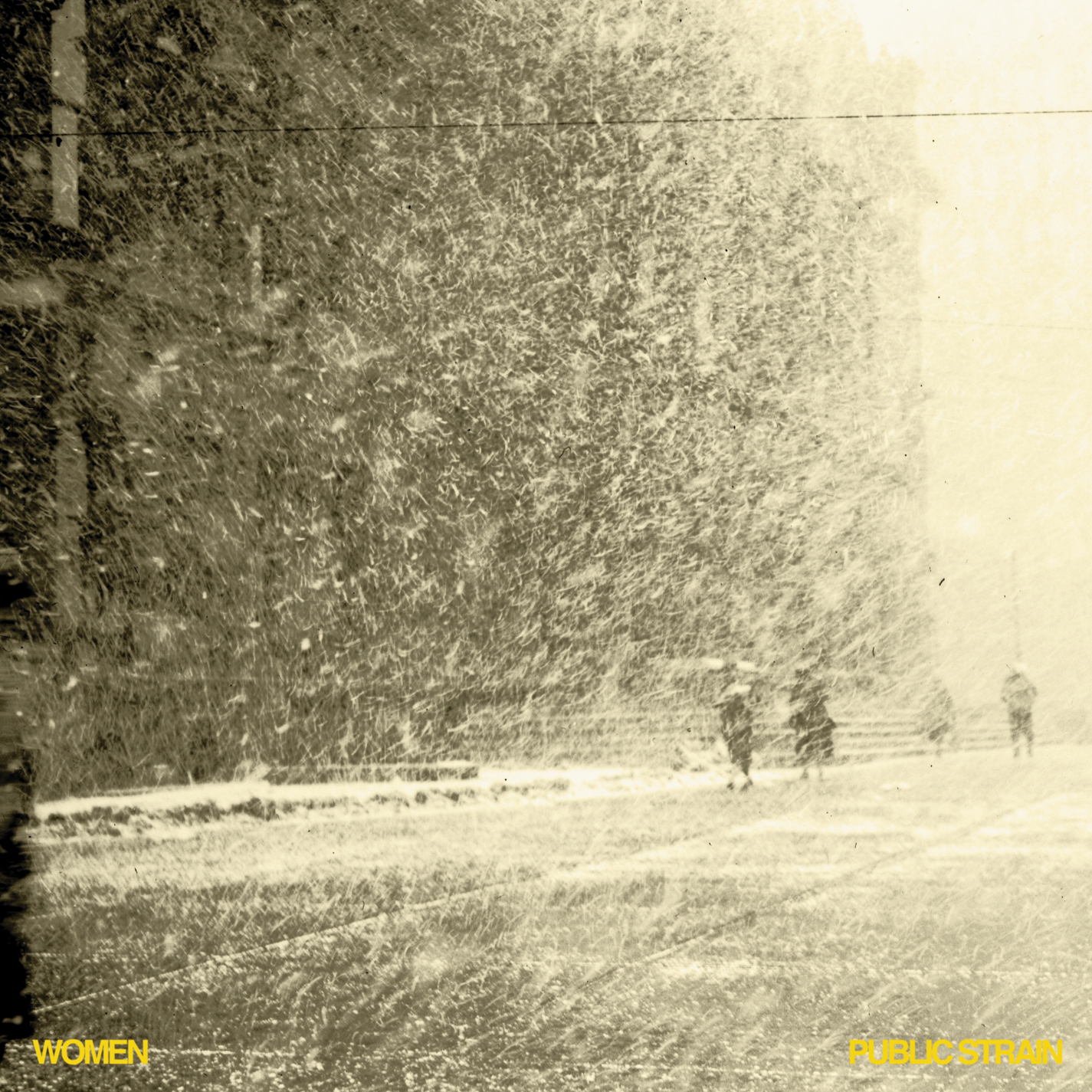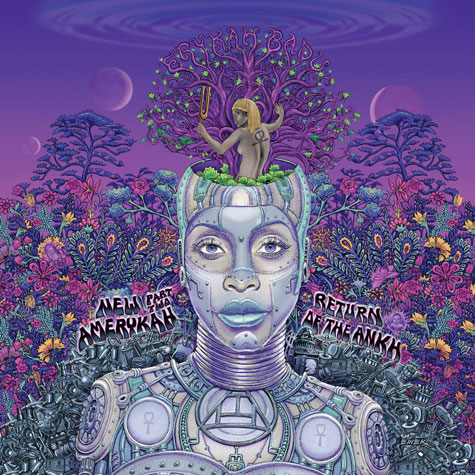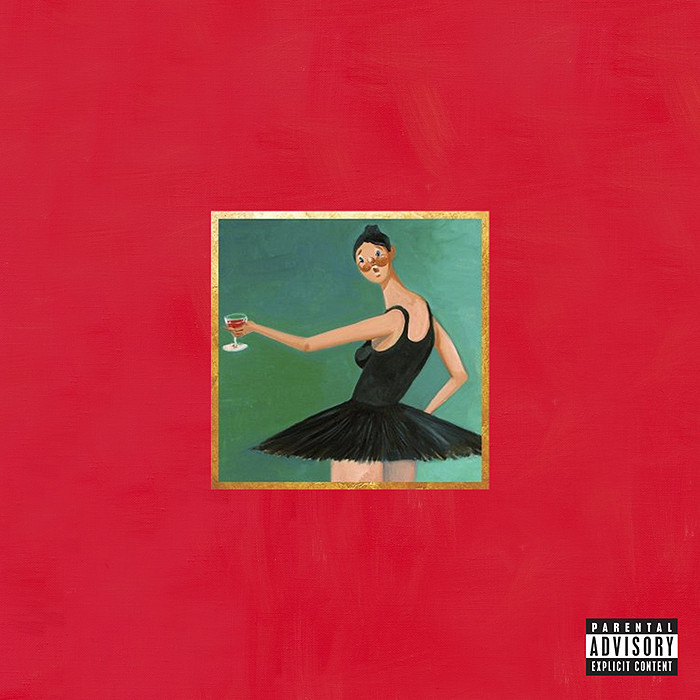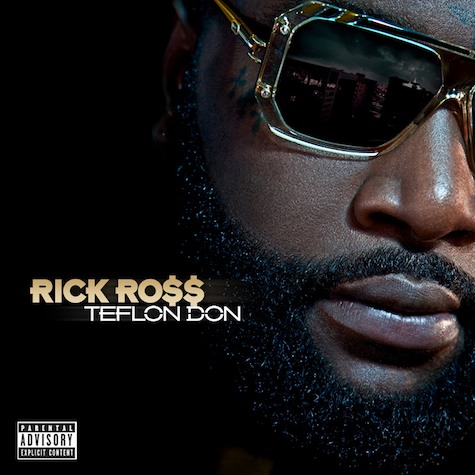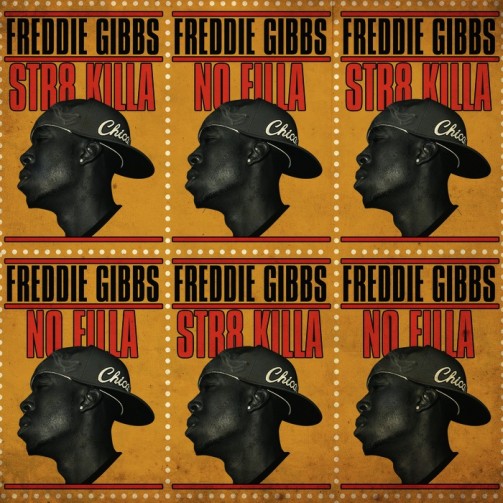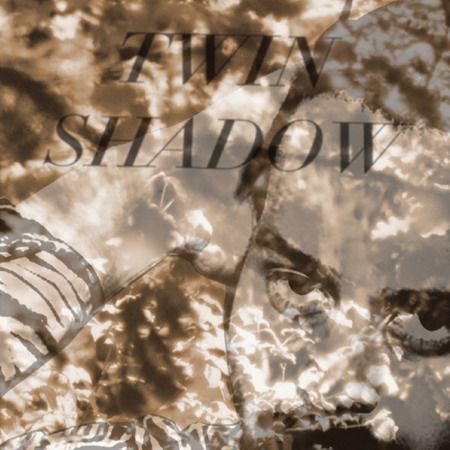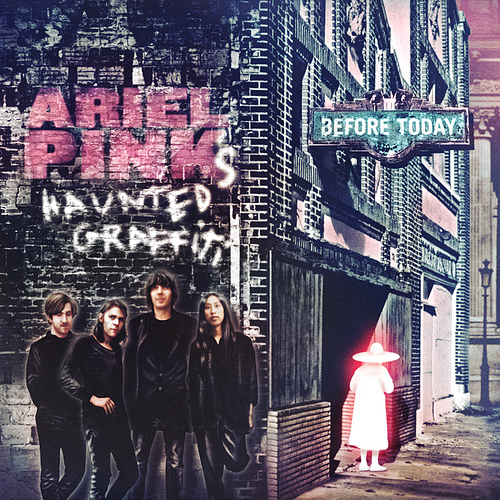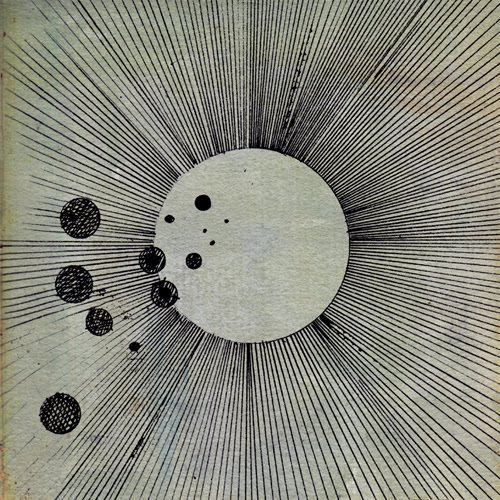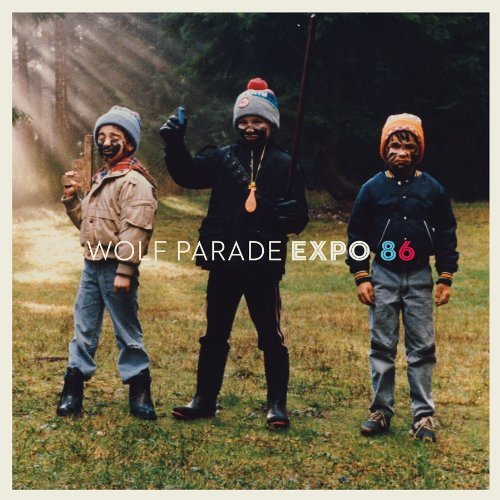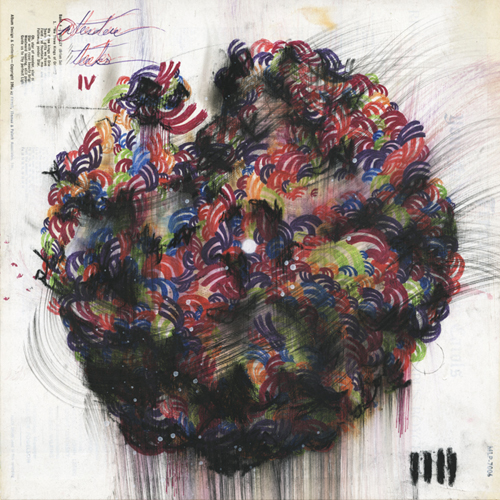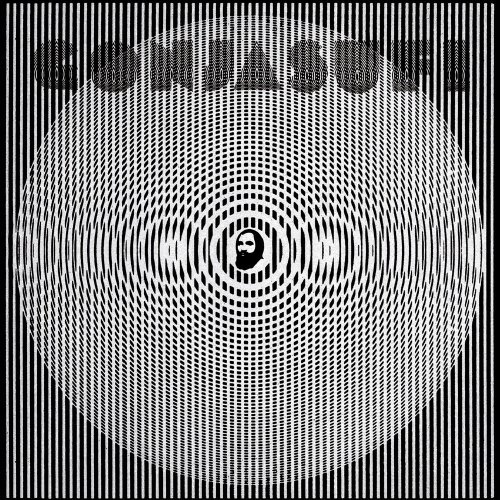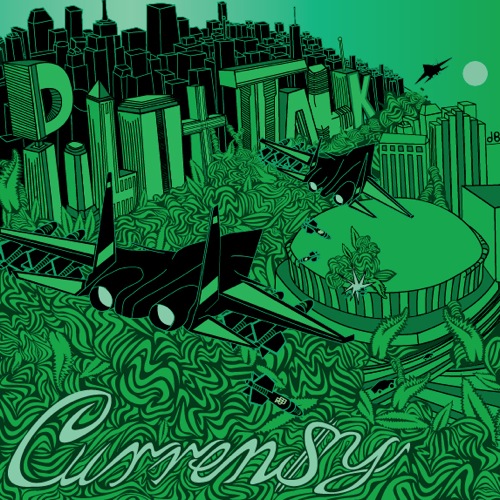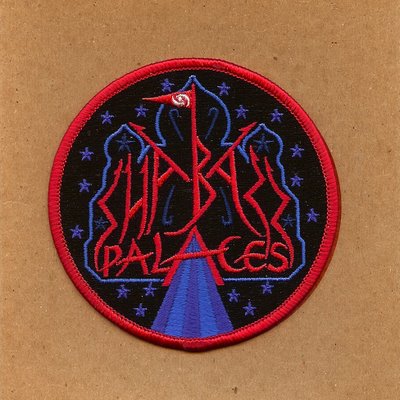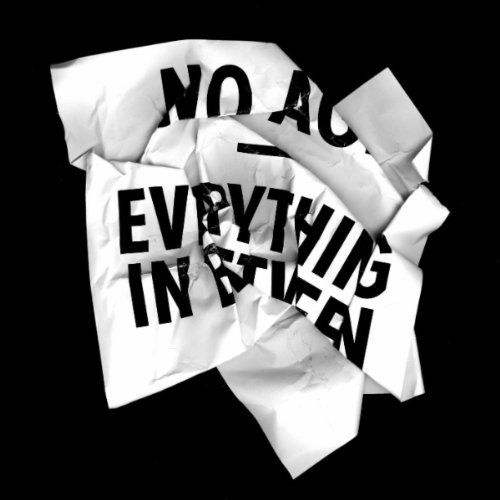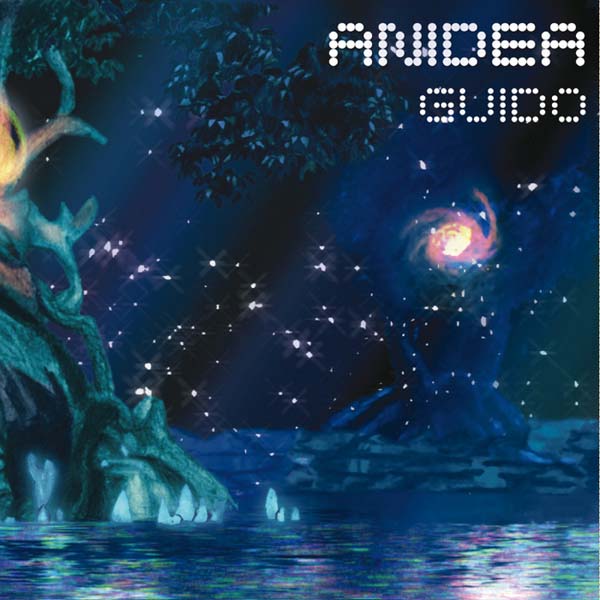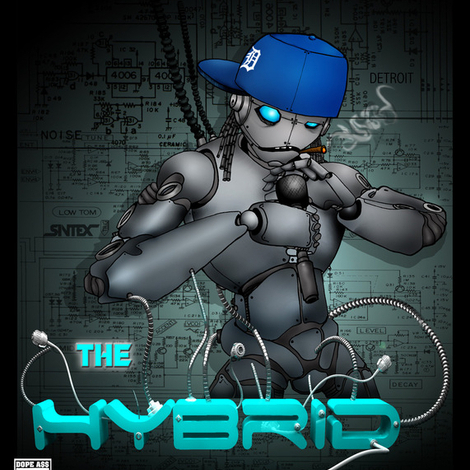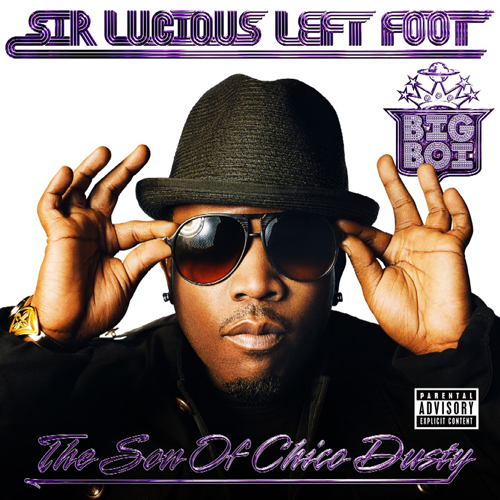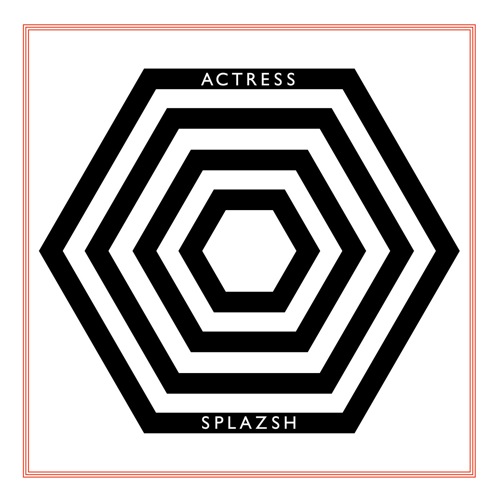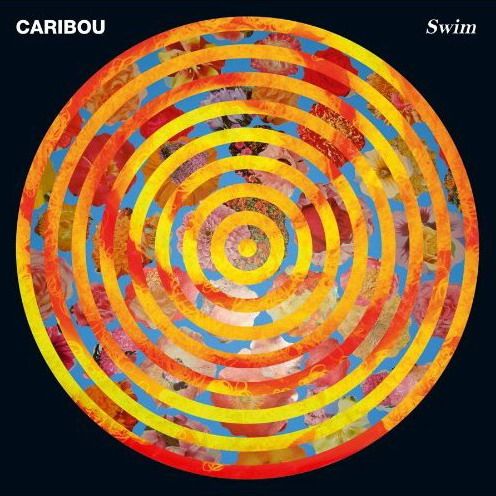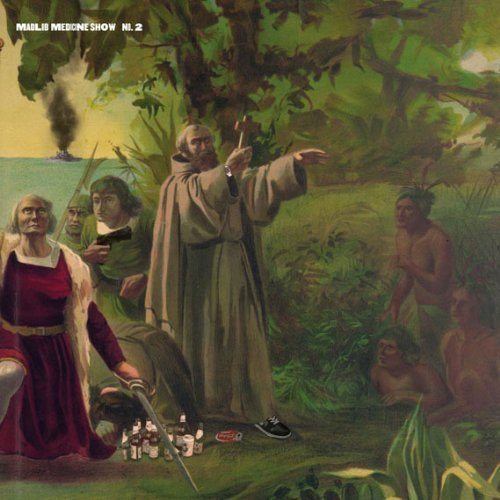http://www.youtube.com/watch?v=hlrN3tt62BI
You’re always welcome at an Arthur Murray dance party.
50. DaVinci – The Day the Turf Stood Still – [SWTBRDS]
A cursory skim of The Day the Turf Stood Still might convince you that DaVinci is the latest underground talent from New York, but the longtime Fillmore resident reps San Francisco through and through. However, you’d be rightfully noting the old New York style permeating DaVinci’s official debut: dusty breaks, fast-forwarded soul samples, and airy jazz loops (“Ghetto to Mars” recalls a less paranoid version of Mobb Deep’s “Up North Trip”). There’s even the occasional interspersed Jay-Z line. As a rapper, DaVinci is more substance than style — he delivers his trife life tales with a deliberate commanding baritone. While his bulldozer style is enough to make The Day the Turf Stood Still a success, DaVinci’s biggest asset is his ability to engages convention, inhabiting these well-worn ideas and then melting them into new shapes.
“I was fresh outta grammar school, before I ever held a tool/ Jeans was faded, rocking dirty slanted shoes” raps DaVinci on “Ben,” a track about his friendship with dead presidents. It attacks a tired trope head-on and emerges on the other side, still gaining steam. “DaVinci is probably the quickest thing to hit you since Ali” he claims on “Whiplash,” but his style seems mor slow and steady variety, like a modern-day Jack Dempsey — absorbing hits all night long, tiring you out before his moment arrives. And his moment always arrives. —Renato Pagnani
MP3: DaVinci – “What You Finna Do”
49. Warpaint – The Fool – [Rough Trade]
A few years ago, it would have been difficult to picture a new band revitalizing post-punk sounds but Warpaint manage to fuse an angular style with folk harmonies and the dark ambiance of vintage psych-rock. The Fool strikes you with an incredible ferocity and sense of purpose, every cutting riff, every drum beat perfectly placed. “Set Your Arms Down” sets the scene with a stop-start drum beat and a narrow, winding guitar figure that twists around the vocals like a choke hold. The chiming chords on “Undertow” foreground eerie siren harmonies. There are a few sleepy numbers here and there, but by the time the drums drops on “Bees,” they signal the assassin at the door. But the brilliance lies in its ability to play both sides. The swaying acoustics of Baby” might signal a love song or a serious threat. Either way, preparation is recommended.–Aaron Matthews
MP3: Warpaint-”Bees”
48. The Gorillaz – Plastic Beach – [Virgin]
A sprawling ode to the new synthetic age from the mind of Damon Albarn. All the more appropriate coming from a completely fabricated band, augmented by guest spots from Lou Reed, De La Soul and the Clash. Yet the album still makes room for hushed, gorgeous duets between Albarn and Little Dragon singer Yukimi Nagano on “Empire Ants” and “To Binge.” Bobby Womack provides the real heart of the album, the years adding grit to his deep croon. “Cloud of Unknowing” pleads with the LCD generation to rediscover life and love. “Sweepstakes” imagines the everyone’s-a-winner culture with Mos Def at his most purely verbal, and tempestuous horns from the Hypnotic Brass Ensemble. And “On Melancholy Hill” might be the best pure pop song to drop this year. All praise due to our new plastic overlords. —Aaron Matthews
MP3: The Gorillaz – “On Melancholy Hill”
47. Tobacco – Maniac Meat – [Anticon]
I don’t like Pittsburgh. It’s five hours from my Philadelphia jungle and we have the same governor and all, but it just goes to show how diverse and frankly dissimilar the two biggest cities in Pennsylvania really are. We say “jawn”, “atty-tude”, “Iggles” and “jeet yet?”. They say “yins,” “pop”, “gum bands”, “Stillers”, and so on. We have the cheesesteak. They have Primanti brothers. We have Freeway, Black Thought, Will Smith, Beans, etc. They have Wiz Khalifa. And at one point, we had Diplo. They now have Tobacco. And I really hate Pittsburgh for that.
Maniac Meat, Tobacco’s second LP, sounds like the NuPhilly. We are all technologically isolated, listening to iPods, snatching free wi-fi everywhere, highly caffeinated, shivering and living in a city that’s flat broke, full of cutbacks, meter maids, and murders. Maniac Meat is bursting with synthesizers, punishing basslines, vocoders, and handclaps set to horrifyingly dirty presets. “Sweatmother” sounds like domestic abuse on the trolley tracks in University City riding by the new American Outfitters on a bus packed with lunatics. “TV All Greasy” is the animosity of old school Italian and Irish residents as hipsters and art freaks gentrify their secluded slab of compacted rowhomes. “Unholy Demon Rhythms” is the Linc empyting out after an Eagles victory (or loss–parking lot beatdowns come from joy and pain). “Fresh Hex” with Beck is the Kensington Strangler’s pick-me-up. It’s beautiful that Maniac Meat is so catchy and deranged; it’s the Pittsburgh bizarro beatdown of “Black and Yellow”, a worthy Philly cousin indeed. –Zilla
MP3: Tobacco-“Six Royal Vipers”
46. Lower Dens – Twin Hand-Movement – [Gnomonsong]
Jana Hunter’s come a long way. The Baltimore-based songwriter may still be releasing music through Devendra Banhart’s label, Gnomonsong, but for all intents and purposes the freak folk tag died in July of this year with the release of Twin-Hand Movement. You only see a peep of the Hunter who slid through 2006’s Blank Unstaring Heirs of Doom, and then decided to tour the east coast by sailboat.
Lowe Dens are young — if not age-wise then by association. That subtext runs throughout Twin-Hand Movement as the four-piece constantly push and pull, call and respond. Things sometimes drift towards the hypnotic, as Lower Dens work a particular groove in ever tightening circles, taking the listener deeper, and deeper, and deeper. Throughout, Hunter’s vocals remain just out of focus. It can be unnerving how the delicately built front woman brings forth such husky beguilement: in the first five minutes of Twin-Hand Movement she goes from being your long lost kid sister to something dark and dangerously close to carnal, emotions winnowed away carefully until they eventually transfer over to the listener. Perfectly sequenced, patiently constructed and precisely delivered, you’d be hard-pressed to find a better debut in 2010. – Matt Shea
45. Earl Sweatshirt – Earl – [OFWGKTA]
Much has been made of Odd Future’s obsession with the occult, but it’s possible that EARL’s success owes as much to Chuck Inglish and Mikey Rocks as the Braunsteins. He wins likeability using the old Jewish comedians’ best friends: dead pan humor and self deprecation. Capably armed, Earl’s use of mysogyny and the macabre becomes apparent: like Method Man with his nursery rhymes a generation ago, Earl’s morbid punchlines serve as dressing for his dead eye delivery and olive oil voice. There are standouts such as “Couch,” “Kill,” “Luper,” “epar” and of course the title track. But with ten extremely solid songs, Wolf Gang’s charismatic frontman may just have delivered the year’s finest Rookie effort in a crowded field. –Abe Beame
ZIP: Earl Sweatshirt – Earl (Left-Click)
44. Nocando – Jimmy the Lock – [Alpha Pup] & Open Mike Eagle – Unapologetic Art Rap – [Mush]
Nas was wrong. There are always original ideas, but there are no new archetypes. Critics who classify 2010 as the year of Kanye overlook the procession of young characters acceding to old thrones. Odd Future may not be the next Wu-Tang or N.W.A., but they carry on the tradition of large lawless crews. Whether Kim admits it or not, Nicki stole her long-vacated spot. Flocka’s Hulkamania rap has precedence in M.O.P and Onyx. Lil B has Kool Keith. Yelawolf has Eminem. Wiz has Snoop. Curren$y has Devin. Drake has Liza Minelli. And Open Mike Eagle and Nocando rep the next generation of the Project Blowed, spawn of the Freestyle Fellowship, Abstract Rude, and any rhymer willing to brazenly flout traditional rap rules and orthodoxy.
It’s fitting that Murs took Nocando on tour with him earlier this year, because James McCall represents the next generation of what he himself calls “cool black nerds.” “Jimmy the Lock’s” original title was “Exploits and Glitches,” a name inspired by Nocando’s former career as a video game tester. Mike Eagle is an ex-special education teacher, who likes Paul Barman and Pavement, and is unapologetic about his desire to make art rap. But like Aceyalone and Busdriver before them, Nocando and Open Mike temper their idiosyncracies with lacerating humor and self-awareness. A natural satirist, Mike enlists Hannibal Burress to ruminate on the meaning of art rap parties (WIN A LIFETIME SUPPLY OF HUMUS). Nocando declares himself officially swagnostic and raps over a diamond cluster of beats from Low End Theory linchpins Nosaj Thing, Free the Robots, Daedelus, and Nobody.
Nocando and Open Mike Eagle represent the sort of rappers you hoped the old underground would produce. Smart, caustic, and ideologically beholden to only constant elevation. In 2010, they established themselves as two of Los Angeles’s most interesting voices. Following their level of difficulty will be fun to watch. –-Weiss
MP3: Nocando-“Hurry Up & Wait”
MP3: Open Mike Eagle-“I Rock”
43. Skream – Outside the Box – [Tempa]
Bass music may be in a golden era but pity the Dubstep DJ. Attacked from all sides in 2010 as noisy wobble, the genre in its pure form underwent a critical beatdown worthy of post-90s Drum & Bass. Still, “the little movement that could” continued its meteoric rise this year, brushing off the hate and gaining new supporters much to the chagrin of both the underground cognoscenti and mainstream critics unwilling to accept its harsh sounds. Dubstep flag bearer Skream continued his role as public face of the movement with his second album “Outside the Box”, a release that served as a de facto overview of everything going on in UK Bass’ mainstream oriented circles. For those keeping score, you’ve got your vocal pop maneuvers, your jungle revival, your filthy tear-out and yes, the occasional blunder featuring Murs.
None of this actually broke new ground but by Pop-Music standards it was a revelation: a mainstream album whose production leap-frogged the tired rhythms and sounds of electro, Hip-Pop and typical dance music and subsumed them to more aggressive and ultimately interesting techniques and approaches. Outside the Box isn’t a classic, but it’s proof that Dubstep’s ascent up the charts might just be the kick in the ass pop needs to wake itself out of its nauseatingly played out 80s revival phase.–Sach O
See also: Skream – Freeizm vol 1-2-3
MP3: Skream ft. La Roux-”Finally” (Left-Click)
42. Terror Danjah – Undeniable – [Hyperdub]
Grime is back! Or it’s not? I don’t know and to be honest, unless I move to London I’ll probably never totally understand this weird mutant strain of rap and Garage on steroids. Like Hyphy or New Orleans Bounce, Grime is far too specific and regional to ever truly crossover, but with so much of it these days sounding like watered-down American rap with funny accents, I’m not sure it’s much of loss. Thankfully, the underground continues to provide innovative tracks both on the vocal and instrumental tip and no one in Grime came stronger this year than the newly rejuvenated Terror Danjah.
His crowning achievement is (ahem) undeniably this full length LP on tastemaker Hyperdub, a neon colored adventure in future funk landing somewhere between Timbaland, Joker, Dam Funk and Dubstep. Freeing the man to expand his sound beyond the typical reaches of urban music, Hyperdub proved to be the perfect home for Undeniable, allowing for minimalist house refixes, romantic rap anthems and dark brooding numbers in equal amounts. Whether you believe in Grime’s revival or not, there’s no denying that Terror Danjah spearheaded a movement of new Urban producers in London, a movement whose slang may still be impenetrable but whose sounds are simply too dope not to reach foreign ears.–Sach O
See also: Terror Danjah – Power Lines EP (Planet Mu)
MP3: Terror Danjah-“Acid” (128 k/bps)
41. Freeway & Jake One – The Stimulus Package – [Rhymesayers]
Kanye feel in love with Autotune and v-necks. Jay-Z ate crepes with Coldplay. Dame Dash latched onto the Black Keys and Ski Beatz for credibility. Cam’ron laid low in a Motel 6 in Ohio after disbanding the Dips and beefing with 50. Memphis Bleek kept the weed secure as always. And Beanie bitched about everyone on the radio for 6 months. You can understand why we all were rooting for Freeway.
Once Roc-a-fella crumbled, we witnessed the testicular fortitude of its key members once the phone calls stopped, the Soundscan numbers weeped, and the license to print money off rap CD’s expired. Some went crazy. Others went bougie. Freeway, well, he just kept rapping. No beefs, no sneaker companies, no movies. Rapping is Freeway’s only trade. And The Stimulus Package with Jake One paid off like a motherfucker.
You could claim that the title of the unforgettably packaged album referred to the seemingly comatose career of Freezer. After giving out free music daily for The Month of Madness, Stimulus brought the focus back to Free’s ability to make heartfelt and celebrated vicious east coast full lengths. With Rhymesayers-meets-G-Unit slapmaster Jake One at the helm, Stimulus made it cool again to have only one producer in the credits (albeit a guy who can hang with Just Blaze, the Heatmakerz, and young Kanye) and letting a technical airhorn lyricist play exclusively to his strengths: flowing like a damn NATO riot over gorgeous and dramatic beats. Instead of pushing the envelope, Free stamped the damn thing shut until he ran outta ink. To quote the iTunes bonus “African Drums”, other rappers this year blew up but Young Free really did explode.--Zilla
MP3: Freeway & Jake One ft. Raekwon – “One Thing”
40. James Blake – CMYK/Klavierwerke EP’s – [R&S Records]
James Blake is smart enough to know that if you’re going to reshape bass music in your own indie-influenced image, including a few R&B samples might be a good idea. Hence, CMYK didn’t just win over the Boomkat brigade’s headphone patrol, it also detonated more than a few dance floors, reshaping Kelis and Aaliyah’s vocals into a jilted lover’s anthem that rode seasick synths and off-kilter drums into experimental territory that doubled as incredibly fresh pop. Grabbing onto the “art-weirdo experimentalist” spot abandoned by Aphex Twin a decade ago, Blake’s CMYK EP somehow turned G-Funk synths and vocal samples into alien-sounding gurgling that sounds like a robotic Christmas party after someone gave the photocopier too much champagne and eggnog.
Meanwhile, he twisted and turned his own piano playing and vocals into sad-sack anthems for his Klavierwerke release, an EP with a German title so serious I’m half-convinced Blake is joking. Hinting at the potential of his full-length album, Blake mostly abandons the dance floor in favor of weird nocturnal maneuvers, drawing on Burial but substituting urban angst for a college kid’s whimsy. That such unconventional sounds managed to grip the dubstep massive is a testament to both Blake’s skill and the scene’s surprising willingness to keep absorbing new styles and influences. —Sach O
MP3: James Blake-”Klavierwerke” (128 K/B)
39. Woods – At Echo Lake – [Woodsist]
The review shorthand for At Echo Lake held that Woods were the jam band for indie kids. A Bushwick-based bunch prone to guitar filibusters and indebted to both the Grateful Dead and Pavement (presumably, Blitzen Trapper lurk in rainy Portland shadows plotting their revenge). But the parallels are more psychological than sonic. Though it’s engendered Workingman’s Dead comparisons, nothing here remotely resembles “Casey Jones” or “Dire Wolf.” Though Woods claim residency in the borough of Brooklyn, their aesthetic owes allegiance to the territory upstate — hence, the title reference to a lake in the Catskill Mountains and a corn-cob pastoralism redolent of hayseed Neil Young, The Band, and yes, the Dead.
While lead singer Jeremy Earl favors third-degree burn psych-rock for his Woodsist releases, his own songs pine for escape — from death, suffering, the corrosive car-alarm nights of the city. At Echo Lake feels like an attempt at reconciliation. The guitar lines wind like lazy rural roads and the controlled improvisation feels loose as campfire punchlines. But the attempts at levity feel like an attempt to ward off encroaching darkness. Their last album was called Songs of Shame and Earl’s falsetto fails to conceal the scars. The sunflowers and rolling hills of the album cover contrast with the foul omens of the “Suffering Season” and “Death Rattles”–the latter with its necrotic metaphors of torn-up shoes, cut-up roots, and “the town getting away from you.” Despite being one of the flagship bands on one of the most hotly tipped labels in indie rock (a label run by Earl), Woods give few interviews, maintain no online presence, and cultivate an alternative worldview of tapes, campfire hymns, and creaky limbs. Like the Dead, they’re after the creation of their own self-sufficient eco-system, rustic structures antithetically opposed to the illimitable abyss of Internet amusement. So much the better that they don’t sound like Uncle John’s Band — Woods understand how to summon their spirit.— Jeff Weiss
MP3: Woods – “I Was Gone”
38. Wild Nothing – Gemini – [Captured Tracks]
In an interview with the BBC, Vladimir Nabokov once declared that “[he] was not one to provide much sport for influence hunters.” Wild Nothing, aka Jack Tatum, provides little sport for influence hunters, but for vastly different reasons. Upon first listening to his record Gemini, reviewers spring to their MacBooks, rabidly invoking the bands the album clearly draws on: “4AD, Elephant 6, Factory, The Smiths, Slumberland, New Order, COCTEAU TWINS!!” It’s true. They’re there. We get it. Let’s move on.
Influences aside, Gemini‘s effectiveness lies in its perfect distillation of mood, experience, ennui, and hope into a coherent, dreamy group collection. Much talked about opener “Live in Dreams” is the best of these, the melancholy acceptance of romantic entropy belied by the track’s gorgeous melody. Even the seemingly emotional monotone of “Bored Games” is made tolerable by pulsing synth and guitar fuzz — with the beauty of the song lending credence to otherwise saccharine sentiment. “The Witching Hour” is powered by frenetic sweetness, a song about long night drives that’s better listened to when those drives are finally over. The sounds that powers these songs may be cribbed from a who’s who of sensitive bands from the eighties, but Tatum combines identifiable elements into something singular: a record cribbing yesteryear’s methods to communicate the modern mood. –-Jonah Bromwich
MP3: Wild Nothing – “Summer Holiday”
37. Beach House – Teen Dream – [Sub Pop]
For the most part, Beach House’s third album (and first for indie titan Sub Pop) sounds like a logical extension of their first two albums. The instruments are clearer, and there are more of them (Pianos! Real drums instead of tinny drum machines!). The songwriting is as sharp as it’s always been, and Alex Scally’s weepy guitar lines are still intact. The thing most striking about Teen Dream is how much differently Victoria Legrand’s voice sounds. That’s not to say that her once-trademark sad-girl alto has become a Joanna Newsom-like whinny or something, but the change is noticeable.
Excepting Devotion single “Gila,“ Legrand’s vocals have never been so commanding, so from-the-gut, so… powerful. Exploring her near-telepathic musical bond with Scally in fresh new ways here, every song finds Legrand expanding as a singer, rendering herself sultrier on “Walk in the Park” and “Better Times,” unnerved and desperate on “10 Mile Stereo,” and belting out the chorus of “Silver Soul” as if her life depended on it. And when Legrand sings the refrain at the end of “Take Care” during the coda while the tension built up during the first-half of the track is released, her voice intensifies after each passing bar, making for the most arresting moment on the entire album, and an incredible climax to their best album to date. –Douglas Martin
MP3: Beach House-“Zebra”
36. Mount Kimbie – Crooks & Lovers – [Hotflush]
In a thoroughly good year for dance music full-lengths, London duo Mount Kimbie stood against the increasing “bro-ey” reputation of dubsteppers by embracing the field-recording pastiche pastorales of their ambient forebears. As such, Crooks & Lovers could just as easily have been called Big Naturals, and not just on account of the cover model. On “Mayor,” the rhythms of a deep house party are paired up with back-and-forth of a ping-pong match. A hazy sound-check gets deconstructed into an Eno-esque set piece “Between Time” that, considering the dearth of room noise relative to the rest of the record, was attended by exactly no one.
As a result, Crooks & Lovers seems inauspicious, yet uniquely seen. It’s walking in imperfect light behind a fat lady past what appears to be the rubble of a run-down city street. The scene hints at decay, of an eye straining for recognition amidst a purportedly Londonian but ultimately disorienting landscape. Unlike London contemporaries such as fellow 2010 standout Actress, who by comparison lends an air of space-age sheen to his elliptical R&B sound-scapes, Crooks & Lovers succeeds because it’s as simple as it sounds: Mount Kimbie throwing shit against a wall for thirty-five minutes and finding that a surprising amount of it sticks. –Mike Orme
35. Ty Segall – Melted – [Goner]
Something is awry with Ty Segall. You’d think that a blonde-haired, babyfaced, ex-pro-surfer would be recording sub-Jack Johnson singer/songwriter dreck instead of the vibrant, paint-peeling garage-rock he’s offered over the past few years, but Brushfire Records’ loss is our gain. Though not of the bland acoustic variety, Melted finds Segall nestling into his own pocket as one of America’s brightest young songsmiths. “Girlfriend” is a garage anthem detailing the adrenaline rush from dating someone new, while “Mrs.” is a murder ballad set along the banks of the Mississippi River, so rife with dejection that it could have been written by Skip James. He wails powerfully on “My Sunshine“ and “Finger,” strums the hell out of an acoustic guitar to make way for an old-school piano solo on “Caesar,” and is gentlemanly enough to invite you to drink Coca-Cola with him on “Mike D’s Coke”. Something tells me that soda is spiked, but if it’s what helps Ty Segall deliver records as endlessly replayable and satisfying as Melted, then sign me up for a couple glasses. —Douglas Martin
MP3: Ty Segall – “Caesar”
34. The National – High Violet – [4AD]
The musicians in The National provide an excellent counterpart to their singer. The two sets of brothers, Dessner (Aaron and Bryce) and Devendorf (Bryan and Scott), are hyper-musical, well-taught and disciplined in their musicianship. Singer Matt Berninger is a different story, a dusky baritone whose untrained, solemn voice has been compared to every variety of brown liquor available. The group’s strength lies in their ability to couple the stringent musical focus with Berninger’s songwriting persona, a top-shelf drunk who stumbles around the downtown New York streets in his tailored suit, feeling around for the guardrails before he blacks out and stumbles down the steps.
From the lo-fi fakeout of opener “Terrible Love” to the divebombing strings toward the end of closer “Vanderlyle Crybaby Geeks”, High Violet captures the band in its element, enhancing all of the band’s individual and collective strengths to create the high-water mark of their ten-year career. “We don’t win if we don’t fight,“ sings Berninger on emotional centerpiece “Runaway,” which is an accurate synopsis of the creative struggle between The National‘s instrumentalists and their vocalist, the crystalline arrangements versus the blurry, half-drunken observations. With a palate so rich, so thoughtful yet so universal, it’s no surprise that High Violet is the record that catapulted the band into the mainstream spotlight. —Douglas Martin
MP3: The National-“Bloodbuzz Ohio”
33. The Roots – How I Got Over – [Def Jam]
The Roots deserve all the success in the world. No one in Hip-Hop has worked harder for longer without mainstream success. Sure they’ve always had their devoted legion of college fans, but do you think Questlove sleeps easy at night knowing his audience’s knowledge of rap music is mostly limited to “The Humpty Dance” and his own material? I doubt it. So when the band accepted their Jimmy Fallon gig, the critical consensus was that they’d slowly fade away, deservingly eating off of NBC while fading into easy-listening territory, which incidentally they did with John Legend…that covers album is terrible.
What the world didn’t expect however is that the band would also regroup and release a world-weary rap album about living in America and coming to term with one’s place in the world. Featuring more organic instrumentation than any of their albums since the 90s, “How I got Over” felt like a gift to the fans and the sound of the band finding its truest, purest sound after a decade of relentless experimentation. Any fears of indie-crossover were proven false, despite a trendy guest list, the band kept on as they always did, incorporating their guests into the mix but keeping the focus squarely on good songwriting, the sharpest production in Hip-Hop and keenly critical lyrics that actually have something to say. Plus, this album made me enjoy, nay, LOVE a song featuring Joanna Newsom: that’s gotta count for something. –Sach O
MP3: The Roots ft. Blu, Phonte & Patty Crash – “The Day” (Left-Click)
32. yU – Before Taxes – [Mello Music Group]
Best known for his work with D.C. rap supergroup Diamond District, rapper/producer yU put together one of the strongest 90s hip hop albums of the aughties. Before Taxes is built upon carefully selected samples and smart songs which link hip-hop to Native American culture (“Native”) and family life (“Memory”, “The Rock”). The mournful horns and thumping drums of “Corners” complement yU’s back and forth with EyeQ, a song that could have come out on Wild Pitch in ’93. It helps that yU is a thoughtful, honest writer with a molasses-thick D.C. accent that manhandles syllables and pitches bars like fast balls. He finds strength in contemplation, from wishing life could slow down on “Break Down” to deconstructing society’s deceptions over a metronomic guitar sample on “Brainwash”. The record is a purposeful throwback, but it works because Y understands what made 1990s hip hop great — highly recommended even if you didn’t own a pair of Zubaz. —Aaron Matthews
MP3: yU – “Close”
MP3: yU – “Work It Out”
31. Digital Mystikz – Return II Space – [DMZ]
I didn’t review “Return II Space” for this site because quite frankly, anyone who was going to buy this record was going to do so with or without my words of encouragement. Sticking to his guns (and frustrating this reviewer) by dropping the year’s single most anticipated Dubstep release on vinyl only, Digital Mystikz don Mala simply crushed the competition with this album, providing incredibly deep and heavy vibes while the competition was stuck in the midrange. Reminding the world that Dubstep’s greatest gift to the world was its sense of space and heaviness rather than aggression, “Return II Space” is in turn, stunning, beautiful, awe-inspiring, terrible, thundering, frightening and most of all overwhelming. It’s the handcrafted masterpiece of a man who simply makes music because he wants to and for whom the thought of compromise is simply impossible. Mala’s peers may have moved onto the world of pop stardom but “Return II Space” still sounds like it was made for the empty room at FWD>> in 2005: cavernous sub-frequencies, meditative menace and unnerving percussion collide to form combative collages of sonic warfare, dance music in name only that quite simply overpowers every other sound. I wouldn’t be surprised if “Return II Space” was this list’s lowest selling release but when it comes to that awe-inspiring, goose-bump causing feeling you get when you realize you’re listening to something special…it may just be the year’s strongest. –Sach O
See also: Deep Medi Releases Vol 1-2.
MP3: Digital Mystikz – “Return II Space” (128 k/bps)
30. Beach Fossils – Beach Fossils – [Captured Tracks]
Beach Fossils practically set themselves up to fail in the unflattering glare of critical spotlight. A lo-fi-ish (groan) Brooklyn band (groan) playing sun-kissed post-punk (GROAN), reaching for the indie zeitgeist by practically naming themselves after the go-to overused inspiration for most run-in-the-mill indie bands since 2008, the BEACH (come on, dudes, WTF). The only thing that prevented the band from being a footnote in the annals of Trendy Band History was the actual music. Head Fossil Dustin Payseur was reportedly heavily influenced by jazz while recording these summery tracks, and it shows. On each song, every instrument sounds like the parts for them were written in direct correlation with everything surrounding them, countermelody after countermelody stacking on top of each other until a musical vortex is formed and you’re floating in vertigo. It’s safe to say that Beach Fossils conquered lower expectations than any band in 2010. What’s in a name, anyway? –Douglas Martin
29. Forest Swords – Dagger Paths – [Olde English Spelling Bee]
Dagger Path sounds like nothing else on this list. It has got dub echo and western guitar, but you’d be hard-pressed to call it bass music, world music, chillwave, or psychedelia. It’s that an increasing rarity – a unique beast defying genre tags while burrowing into your brain and scoring your dreams. Singlehandedly bitch slapping the picked-o’er bones of Chillwave (let alone the turd trend, “Hauntology”), Forest Swords’ high/low fidelity wasn’t an empty grab at nostalgia accompanied by a random faded Polaroid. Instead, it was a carefully crafted sonic world enveloping the listener and transporting them to a shadowy universe where cowboys and samurais war on ravaged wastelands. The perfect soundtrack to an evening chain-smoking spliffs — an album so atmospherically thick and dedicated to its own moodiness that it initially dropped unnoticed, slowly attracting attention and reissues throughout the year, quietly becoming a minor music crit sensation. It’s a testament to Dagger Path’s quality that it achieved this success without pandering to the dance floor or bespectacled vegans, picking up outcasts and misfits from all walks of the sonic graveyard. The underdog pick of the year, Forest Swords’ album will surely be slashing skulls deep into 2011. –Sach O
MP3: Forest Swords – “Glory Gongs”
28. Women – Public Strain – [Jagjaguwar]
Women don’t apply themselves to modern indie-rock standards. In an age where “indie” is less way-of-life than lifestyle, where bands don’t have to sand down the edges to receive mainstream love because they’re edgeless bear to begin with, the Calgary band delves deeper down the rabbit hole. While the year’s big trend was for pale-faced indie kids playing music so beachy you’d think they sported Jersey Shoe tans, Women’s cover art depicted a blizzard. While most bands gave you blissed-out fuzz, Public Strain gave you blistering, ear-splitting noise.
Many bands have used static and distortion to rough up their recordings, and so do Women, but that’s not the end-all, be-all of their musical capabilities: “Narrow With the Hall” takes a garage-pop tune almost as catchy as their own “Black Rice” and blasts it to bits; “Drag Open” finds frontman Patrick Flegel singing, “You’re such a drag, oh man!” in the midst of the band’s gleeful destruction; “Locust Valley” combines chiming guitar lines and a cyclical bassline with a Krautrock-like groove, while “Venice Lockjaw” finds the band playing the most beautifully melancholy tune they’ve ever laid to tape. By the time the clanging “Eyesore”– probably the band’s best song at this point– goes into the end coda, every member is hitting all cylinders, bashing away at their parts during a long, thrilling fadeout akin to the end credits rolling during a movie’s final battle scene.
Public Strain is the work of four individuals who are very well-aware of a time before “art-rock” meant just a cool pose to sell records and concert tickets. Few have ever made such artful use of feedback, alternate tunings, and unabridged, undistilled dissonance. After all, there’s so much uncorked tension on this record that things only resolved themselves via a band-ending on-stage fistfight. Let’s see the Arcade Fire do that. —Douglas Martin
MP3: Women-”Narrow with the Hall”
MP3: Women-”Eyesore”
27. Ikonika – Contact, Want, Love, Have – [Hyperdub]
Ikonika brought a hyper-color sheen to London’s urban sound, contrasting its shadowy bass to a brilliant palette of evocative melodies and timbres. Indebted to the classic videogame hooks and funky garage rhythms of her 90s childhood, Sarah Abdel Hamid’s debut album was fun without being cloying, rhythmic without being overly functional and tough without degenerating into a bass-driven circle jerk. The perfect soundtrack for nocturnal subway rides, spring time jogging or a night trying to beat M. Bison at Street Fighter IV, Love, Want, Contact, Have fulfilled Hyperdub’s potential to go beyond the dark and dangerous edges of dubstep into the future. Despite beats seemingly designed for a particularly rhythmic octopus, the album’s melodic sensibility took center-stage as each track featured a whirlwind of synths competing for attention, all without crowding the spectrum. The result is a beautifully emotive album that never takes the easy way out, surprising you with every twist and turn and leaving you wanting more. With upcoming releases on her own Hum & Buzz Records, a recently released batch of remixes, and a long lineup of DJ engagements, Ikonika is sure to go places in 2011. However, the repeat spins of her 2010 classic will surely ring the loudest. –Sach O
MP3: Ikonika-“Sahara Michael” (128 k/bps)
26. Erykah Badu – New Amerykah Pt 2: Return of the Ankh – [Motown]
I can’t help but feel that this record disappointed folks because it wasn’t quite what they expected. Putting aside New Amerykah Pt 1’s roughneck Hip-Hop beats in favor of a smoother, more feminine sound; Erykah Badu offered the mirror image of that record’s streetwise black rage: a sensual, cosmic journey into space-age soul. Though perhaps not quite as bracing as its predecessor, Return of the Ankh offered plenty of sterling moments from its Tribe Called Quest-sounding intro to the breezy “Window Seat,” to its multiple Biggie tributes and a Paul McCartney-sampling deep cut. To top it off, Madlib came through with his best beat of the year with “umm Hmm,” undoubtedly the single most beautiful moment in R&B this year.
A deep meditation on love, the album proved that Erykah Badu could go on to produce mature work without losing her edge. At this point in her career, she may well be the only vocalist capable of bringing together J Dilla, Lil Wayne, Rick Ross and Jay Electronica fans together, putting everybody under her spell until we’re all wearing crocheted pants. It’s impossible to predict where she’ll go from here, but all that’s certain is that Badu is a world-class artist whom forward-thinking music fans can ignore at their own peril. –-Sach O
25. Kanye West – My Dark Twisted Fantasy – [Roc-A-Fella/Def Jam]
I’m not going to bother describing this album. This site already spent a week doing so. If you cared about music in 2010 you’ve heard this album, and spent at least a few hours pontificating on the grandiose meaning of it all. No one album this year has had more words spilled about it than My Beautiful Dark Twisted Fantasy. In the wake of it’s release, Kanye unleashed a firestorm of conflicting judgment and critical opinion. The mainstream outlets embraced Kanyes’s fearless inventiveness and ambition. The always ornery and ever skeptical internet rolled it’s eyes at the navel-gazing, woe-is-me attitude and pointlessly long run time. The power of this album should be evident when you consider the wealth and strength of the emotion it elicited from of the public. My opinion? I believe in its genius. Whether you agree or not, it was the most significant album we’ve heard from an artist in a very long time – a portrait of falling through a declining world.–Doc Zeus
MP3: Kanye West ft. John Legend – “Blame Game” (Left-Click)
24. Rick Ross – Teflon Don – [Def Jam]
I don’t know what kind of fool believed he ever knew the real Noriega to begin with, but besides being 2010’s best meme generator, “B.M.F.” was also the year’s most important hip-hop track because it allowed Rick Ross to break kayfabe and just flat out say: This. Shit. Isn’t. Real. Finally freed from the shackles of factual accuracy and genuine life experience, rap is at its most exaggerated on Teflon Don and all the better for allowing only the most domineering, expensive beats and extravagant boasts. The sheer range of the co-signs are evidence enough that complete suspension of disbelief is what the game’s been missing – Gucci and Drizzy, Diddy and Kanye, Erykah Badu on a song called “Maybach Music” – but if you need further proof of the appeal held by Rozay’s Hip-Hop Fantasy Camp, the vocal opposition of 50 Cent and Young Jeezy only seemed to accelerate their frightening descent into irrelevancy. Big Meech, Larry Hoover, MC Hammer, hell he could think he’s MC Skat Kat for all I give a shit. Point being, Teflon Don negates the idea of rap as the ghetto CNN and instead turns it into the ghetto Fox News- wildly entertaining sensationalism not the least bit beholden to the truth. —Ian Cohen
MP3: Rick Ross ft Styles P – “B.M.F “
23. Freddie Gibbs – Str8 Killa No Filla EP/Mixtape– [Decon/Self-Released]
Sach summed up Freddie Gibbs as a “lab-created rap Frankenstein comprised of East Coast wordplay, West Coast attitude, Midwest flow, and Southern inflection.” While Straight Bangin’s appraisal remains the (Acapulco) gold standard. This website has 14 posts tagged under the “Freddie Gibbs” category. The idea of writing another one makes me want to scream “fuck the world. There’s only two opinions available in this lampless cavern of the Internet — you either think Gibbs is one of the most consistently excellent rappers of the last two years or you crave your rap music with 22 percent more David Guetta (he is so wonderful that his pecs shoot golden lasers).
There is arguably no one else in rap as effective at condensing an aesthetic into one sentence. On “Dollar$ 4 Dope,” he “bumps Suga Free in my 83/as I’m slanging D/I make a bitch take a trip to push the shit from A to B.” It’s superficially simple but immaculately constructed — all pinpoint accuracy and complex internal rhymes — the rare combination of lyrical detail and effortless cadence. Or there’s “Slammin,” where he boasts about “shipping a gang of skanky to Kankakee, Illinois.” Or the obscure shout-out to “Charlie’s Candy Store,” a reference lost to anyone outside of Gary, but indicative in how firmly he grounds his record in real time and place. This approach is embedded in every 16.
He demolishes everything from original beats to minor Golden Age classics about defying racist police officers with maximum volume — underground cult hits from obscure white rappers and soulful melodic reworkings of a slinky R&B jams once sung by female pop stars from Gary, Indiana. The entirety of “Crushin’ Feelings” is a viable candidate for rap quotable of the year. To a small but growing cult, Gibbs’s songs powerfully convey the idea of struggle — both internal, external, and as a way of actively resisting American buffoonery. They’re honest, brutal and even very funny. Gibbs’ few detractors imagine him as a bland rap automaton, technically good but not technicolor. But on Str8 Killa No Filla, he even stops to crack jokes, turning “Rocksteady” into a goofball 80s rap called “Slangin’ Rocks.” Or the album’s closing moments, where he mocks a clueless label exec bragging about having worked with Dre (Lil 1/2 Dead put his dick on her head). After all, Gibbs remembers everything — most notably getting dropped from Interscope which perpetually looms as the subtext to his revenge soundtracks for the aggressive and aggrieved. But that’s the thing, when you rap this well, you don’t need to detox. —Jeff Weiss
ZIP: Freddie Gibbs-Str8 Killa No Filla (no DJ) (Left-Click)
22. Twin Shadow – Forget – [Terrible Records]
2010: the year even Brooklyn was sick of Brooklyn. You could argue there was a general malaise towards the hype cycle as a whole, but compared to what was going on in Los Angeles, San Francisco or damn near anywhere else in the country, the borough felt more like an endless conveyor of terribly named CMJ timekillers than indie rock’s vital nerve center. It’s fitting that in this cratered scene, the rookie of the year was someone who came off like a true outsider completely uninterested in blog politics. Unlike Jay-Z, George Lewis Jr. didn’t make a huge deal out of being a black guy down with Grizzly Bear and his accompanying videos pushed unnerving anachronism and distance. Fitting since while the presence of Mozz and Richard Butler hang heavy over his debut Forget, what makes it such a haunting document is the eerie disembodiment. “Everything I see looks like gold/everything I touch goes cold” sings Lewis over clattering drum machines and funk guitar stabs, and it’s real talk since for all the pretty in pink sonics, Forget often finds Lewis numb to the underlying menace of every romantic encounter – a climactic dance-floor showdown (“I Can’t Wait”), the unspoken violence of “Shooting Holes,” the implication of racial discord in “Tyrant Destroyed, “Slow”’s climactic cry of “I don’t want to believe or be in love.” An ironic statement for an album that crushed it on the mixtape circuit, but the truth is that you don’t have to agree with Lewis to believe in him. —Ian Cohen
MP3: Twin Shadow-”Castles in the Snow”
21. Ariel Pink’s Haunted Graffiti – Before Today – [4AD]
Of all the artists that released music in 2010, nobody benefited more from comeuppance than Ariel Rosenberg. He was once deemed as too unfocused, too jarring, too weird, even by indie standards. But really, the only difference between Before Today and, say, Worn Copy, is in its approach. Gone are the instruments and cassette tapes littered across Rosenberg’s Los Angeles apartment floor, erased are the elements of tape hiss and decay that served as underpinnings of art-damage in stark contrast to the soft-rock pastiche he quietly and diligently mastered. Vintage Haunted Graffiti songs are rerecorded with a personnel greater than one with the advantages of a professional recording studio (formerly owned by Tito Jackson, no less!) to reach their maximum potential, while new songs– like stunning disco tune “Round and Round,” easily one of the best singles of 2010– are documents of the man known as Ariel Pink’s exponential growth as both a musician and songwriter.
Case in point: the spellbinding “Menopause Man,” which uses a slinky, 70’s funk-lite bassline as the vessel for the most striking lyrics on the album, using sexual imagery– every bit as brutally explicit and provocative as anything Odd Future has committed to tape this year– to reinforce a universal sentiment: “You’re trying too hard to be what you already are.” And just like that, Rosenberg went from perpetually undervalued to belle of the ball. Regardless of how tethered this record is to the past– in both its influences and old recordings revisited and revamped– what happened before today doesn’t really matter, because right now, Ariel Pink has the last laugh. —Douglas Martin
MP3: Ariel Pink – “Round and Round”
20. Yelawolf – Trunk Muzik 0-60 – [Interscope/Ghetovision]
Yelawolf is an inked-up, part-Cherokee rapper from Alabama with a haircut that the erstwhile members of Japan and Duran Duran would kill for. The guy has more personality than 99% of all rappers solely based on appearance. But he also outdoes 99% of all rappers in nearly everything else. Lil’ Wayne claims he’s a goblin, and Kanye West claims he’s a monster, but Yelawolf is more goblin-like than Weezy and more monstrous than Yeezy. His voice sounds like Gozer’s from Ghostbusters, and he attacks his goth-crunk beats with a nearly peerless intensity, his machine-gun paced flow recalling Twista, with a rhythmic zigzagging that even Jigga would envy. But what makes him so noteworthy among a newly competitive field of upstart MCs is his approach to his subject matter. He has arguably the most energetic and angry weed song ever. He raps about his dad shooting people for trespassing on his property over depressing piano lines. He and Gucci Mane make the most affectless party song ever, accurately conveying the hollowness of partying itself. He raps vividly about crystal meth. And he somehow makes the saddest and the most energetic song about his car possible. Yelawolf is the Drive-By Truckers of rap: A brilliant storyteller and songwriter, with a contemporary approach to a distinctly rootsy sound, and a cult following itching to blow up to a wider audience. –Tal Rosenberg
MP3: Yelawolf ft. Gucci Mane- “I Just Wanna Party”
19. Flying Lotus–Cosmogramma – [Warp]
Cosmogramma, the third full-length from Flying Lotus contains 17 songs that total slightly over 42 minutes. Should you listen to it in its entirety, you might mistake its run time for 42 light years. Each song consists of a dozen different parts, as though they were birthed by 12 different parents. This is an album worthy of Madeleine L’ Engle: time wrinkles and jackknifes, harps quiver, string sections offer votives, ping pong balls act as percussion, hospital machines and coughs are stolen in midnight heists to transmit the feeling of failing mitochondria. No less than Thom Yorke appears and opts to wail wraith-like in the background, content to be a colorful smear in Flying Lotus’s laser-limned map of the universe.
Steve Ellison derives his inspirations from the same nebular whirl that attracted his afro-futurist predecessors, George Clinton, Sun Ra, and his great-aunt Alice Coltrane. Whereas, his lineage to the Queen of Satchidananda had been previously invoked as a divine birthmark, Cosmogramma is the first time he has successfully demonstrated her stereoptic vision — atomizing hip-hop, IDM, jazz, classical, dubstep, house, and recombining them into a world of its own. Midway through the creation of this record, Lotus posted a Myspace blog detailing an experience with DMT and a “vision of a crazy cartoon world that was just so vibrant and wacky, colors swirling, inkblot world, crazy color pattern world, bright color dot world….the ceiling started to reveal the ‘ancient language’. Cosmogramma is his reinterpretation of this ancient alphabet, projected several centuries into the future, composed by someone living entirely in the present. — Jeff Weiss
MP3: Flying Lotus-“Do the Astral Plane” (128 k/bps)
18. Wolf Parade – Expo 86 – [Sub Pop]
Spencer Krug’s tangled mutterings were never this evocative and catchy. Dan Boeckner’s anthemic numbers were never as driving. On the verge of a break-up, Wolf Parade ironically never sounded more cohesive than on Expo 8 —, from the galloping drums on “Cloud Shadow on the Mountain” to those brilliant pulsing keyboards on album highlight “Ghost Pressure.” The Springsteen yearn of “Yulia” is the best song ever written about a lady astronaut, while “Pobody’s Nerfect” pushes forward on the rallying chant “I don’t know how to stop it all” as surging keyboards swell around Boeckner’s wail. Closer “Cave-O-Sapien” has Krug’s yelp bounding off intertwined guitars and synths as he reflects on love in the garden, appreciating the present while it’s here. If this really is Wolf Parade’s swan song, it’s a black and beautiful dance. —Aaron Matthews
MP3: Wolf Parade-“What Did My Lover Say (It Always Had to Go This Way)”
MP3: Wolf Parade-“Ghost Pressure”
17. Teebs – Ardour – [Brainfeeder]
Returning to Ardour almost two months after its release, the album’s closer “Autumn Antique” tells you everything you need to know about Teebs in under two minutes. Stuttering drums, shakers, and a warm immersive string loop that could come off an educational record, sound which embraces you as you listen to it. Ardour is pure emotion, finding that temperate liminal zone between ambient music, electronic and hip-hop. Though Teebs is affiliated with the Low End Theory crew, this is music designed for quiet absorption, not for dancing your face off. With its circular piano loop and distant hand claps, tracks like “Lakeshore Ave” can possess a multitude of meanings – to me, it sounds like touching down in Japan on a red eye. But the beauty is, Ardour can be anything you want to it to be. Just sit down and give it some time to sink in. — Aaron Matthews
MP3: Teebs-”Arthur’s Birds”
MP3: Teebs-”Double Fifths”
16. Gonjasufi – A Sufi And A Killer – [Warp]
This is the place where I’m supposed to pretend that I haven’t written about A Sufi and a Killer many times over and conceive clever synonyms for identical thoughts. But that’s stupid. The appeal of Gonjasufi seems pretty obvious. A biblically bearded yogi with a “bent banshee wail, a protean and haunting voice resembling a Tom Waits weaned on boom-bap, the cracked falsetto of late-period George Clinton and the gruff rasp of Captain Beefheart singing over beat music.” He howls over platters from Flying Lotus, Gaslamp Killer, and Mainframe: a “lost world of Turkish psych-samples, Arabic chants and a surreptitious slinking groove, crossed with the Dilla and dubstep-inflected Low End theory aesthetic. The sort of album that jars you on first listen, but eventually wears itself into the grooves of your synapses: bizarre, baleful, beautiful. ”
Sufi used to rap in the San Diego crew, Masters of the Universe, and everything he does is spied through a hip-hop prism. Think of him as the post-millennial Tricky, a psychotic prophet with dreads and dread but no dresses. If you like the artists enumerating above, you’ll like Gonjasufi’s music. If you smoke the right strains, you’ll love it. But to understand his mentality, you’d have to read his Twitter (or maybe this interview).
These are a few thoughts that he’s unleashed over the last month (in between re-tweeting Prodigy, Ghostface, Chuck D, BlameOne, Sonic Youth, and Bun B): there’s a secret society of artists in this music industry who continue to suck each other off in hopes that their careers will last longer; If Jimi [&] Miles were still in the flesh, I’d be Rollin with them!! Fuk [sic] this “neo soul” sell out shit!! I’m 2 black for this black movement!l; next time you send a CHIHUAHUA to tour manage me and my pack of WOLVES… we will skin him alive feed him to the ducks !!!!; @kanyewest @jayelectronica <—- these guys pretend like they don’t know I’m the shit!!!; In 2011- i will drop the hardest shit!!! Mark my word!!!” Consider the prophecy revealed. You don’t want to fuck with the Sufi. –-Jeff Weiss
15. Dungen – Skit I Allt – [Mexican Summer]
What might to some feel like a minor release from Gustav Ejstes’s pet project (hell, the title basically means “Fuck It All”) instead threatens to establish Dungen-as-kickass-pop-fusion-group (emphasis on “group”) as the next stage of its existence. From the Swedish group’s inception (first revealed to an international audience with 2004’s Ta Det Lungt), Dungen presented itself as a larger-than-life anachronism: hip-hugging bell-bottoms, indecipherable Swedish lyrics, presumably reddened eyes hidden behind Zeppelin hairdos, the rest of the band similarly obscured as hired guns serving Ejstes’s compositional vision. But just as 2008’s collaborative 4 hinted at, Dungen’s nearing the culmination of an extended process of streamlining.
Obviously so much more than a psych-rock freakout record, Skit I Allt still rings with the familiarity of Ejstes’s double-tracked AM vocals, with codas of guitar exposition occasionally clubbing the shit out of his dreamy piano-pop refrains. The heavy psych stuff remains in e.g. “Högdalstoppen,” which in four-and-a-half minutes figuratively levels the shallow Stockholm hills the title name-checks. But Ejstes subdues himself to great effect, letting his band’s talents elaborate his melodic sensibility. The dominant mood is set in flower-power bachelor pad cuts like “Soda” and “Marken Låg Stilla,” a masterfully-spun closing ballad that brings all instrumental and melodic hands on deck. What comes out isn’t so much a dirge record or a freakout session or even a bunch of sunny uptempo rockers, but a bona-fide band that can do all of the above, or just about anything else, at their leisure. –Mike Orme
MP3: Dungen-“Marken Låg Stilla”
14. Curren$y –Pilot Talk 1 & Pilot Talk 2 – [DD172/Def Jam/Roc-A-Fella]
Take your pick, Spitta wouldn’t want us to argue over which installment of Pilot Talk is better. Faced with that choice, he’d probably go with whichever of the two was closest to his bong at the time. Overseen by Ski Beats of Reasonable Doubt and Uptown Saturday Night fame, Curren$y’s Pilot Talk series rocketed the New Orleans emcee past the mixtape pack, catching the attention of rap fans of all stripes thanks to their sumptuous production and laid-back vibe. Released under Dame Dash’s DD172 imprint, the albums epitomized the label’s DIY ethos.
Recorded in-house and mostly eschewing expensive samples and guests in favor of interpolations and close friends, the Pilot Talks stand as the rare rap album that draws equally on Dungeon Fam-era southern musicianship and raw New York boom-bap. Standout tracks, “King Kong” and “Michael Knight” updated classic rap vibes without sounding old-school, merging a carefree atmosphere to Spitta’s low-key southern drawl — the results form hip-hop’s consensus pick in a year where everyone seemed to be heading in their own direction. Beyond the beats and rhymes, Shante Franklin wins on sheer mood. Whereas most contemporary rappers are essentially huge douchebags, Curren$y goofily and amiably comes off as the people’s champ, the guy you’d want to share a blunt with. Whether it was naming his first single after a David Hasselhoff character or having Amanda Diva impersonate a stewardess on “Flight Briefing,” Spitta managed the rare of feat of making rap music sound FUN again, capturing that Native Tongues “crackin’ jokes in the studio” magic without ever relying on oldschool clichés. With Pilot Talk III already on the way, expect plenty more Curren$y here this time next year. –Sach 0
MP3: Curren$y-”King Kong”
MP3: Curren$y-”Michael Knight”
13. Pantha Du Prince – Black Noise – [Rough Trade]
Following two cornerstone classics for Hamburg mainstay Dial Records—Diamond Daze and the dazier, laudanum-laced This Bliss—Hendrik Weber made the leap to indie monolith Rough Trade for his third record under the Pantha du Prince moniker. The move made sense. This Bliss was one of the the mid-aughts most instantly enjoyable crossover records, a winter reverie set to bell tones that pealed like copper struck by sticks of ice, all underpinned by Weber’s prodding bass and small melodic tones adrift in all this twinkle. Add a guest spot from fellow vagabond and longtime pal Panda Bear and the path seemed cleared for a record that might dazzle both the beatzheads and the couchbound potheads.
But whether you were even familiar with this little narrative—whether you’d heard a note of Weber’s music before—the record that resulted from this three year wait, Black Noise, was instant enchantment, negotiating the kind of aural dreamscapes Weber had long trademarked. It wasn’t a reorganization of his aesthetic certainly—one always located somewhere in that blurry nexus between deep house, starry-eyed electronica, post-punk minimalism, ambient music, and the cooler neo-classical textures former label-mate John Roberts mastered this year– but an enhancement of his stately spiritualism. With Black Noise, he’s still marking your hours with his brand of electronic Buddhism. But his ability to numb you with these little bell-rung nocturnes seems cleaner now, and the results are utterly transfixing.–Derek Miller
MP3: Pantha Du Prince – “The Splendour”
12. Shabazz Palaces – Shabazz Palaces/In Light – [Sub Pop]
With apologies to Craig Finn and Holly, this is how a resurrection really feels. Ishmael, one-third of one-time jazz-rap royalty Digable Planets, was last seen in a rap-fusion group called Cherrywine rapping under the name Butterfly. The only person potentially more unlikely to become a Pitchfork and blog darling was Sir Mix-A-Lot, if he re-emerged with a permanent scowl and the demand that everyone call him Sir Beauregard McMuffin. But that’s exactly what happened this spring when Shabazz Palaces slunk out of the Seattle regional rap abyss (Jake One and uh, Blue Scholars and….) with “1055 32 Leaves Dipped in Blackness,” two and half minutes of homicide drums and X-Files synths, set to paranoid IWW-worthy invective about rappers selling out and killing rich people. Dubstep by way of Def Jux. Live shows featuring African dancers, hand percussionists, and the occasional Wire reference. Finally, Seattle got the rap it deserved: rainy-day rants and dystopian doom delivered by the guy who wrote “Cool Like Dat.”It was like an anti-WTO rally come to life.
Treat Shabazz Palace as Butler’s MF Doom homage — his own attempt at revolution. Renaming himself Palaceer Lazaro, he offered few interviews or information about the project, no Myspace page, no Twitter feed, and cryptic McSweeney’s song titles. He’s seen the misguided marketing of the major label system — what happens when you fail to fit an obvious archetype. It was a last-ditch effort to let the music speak for itself. He’d gotten tired of saying nothing, so he responded with as much fury as any rapper this year. In hindsight, the writing was always on the coffee shop bathroom wall — Blowout Comb, Digable’s first-clenched and radical alchemy of Public Enemy, Roy Ayers and Stokely Carmichael, harpooned their promising career in 95. How would you feel if you dropped a classic that went aluminum, then spent the next decade and a half free-falling through a blacklist hell of college shows and exhausted nostalgia? You’d probably also want to take dead aim at pop rappers in whiteboy suits with no imagination. This is the wisdom acquired being strung out but experienced.–Jeff Weiss
MP3: Shabazz Palaces – “blastit at the homie rayzer‚s charm lake plateau bbq july at outpalace pk”
11. No Age – Everything in Between – [Sub Pop]
Over the course of the past three years, the duo of Randy Randall and Dean Spunt have taken the often rigid and sometimes even dogmatic template of punk music and slightly expanded its borders. On the heels of their too-far-ahead-of-its-time singles compilation Weirdo Rippers, No Age released Nouns— their debut proper, a righteous blend of fried-and-fricasseed shoegaze guitars, punk brevity and pacing, ear-drum-severing noise, and celestial ambient soundscapes– to near-universal acclaim, giving a glimmer of hope to those of us indie-rock fans who thought we lost the loud, scrappy, adventurous heart of the genre to Ra Ra Riot and Wes Anderson movies.
Everything in Between finds Spunt and Randall expanding even farther across the musical landscape, ushering in an even richer pop sensibility to be split apart by guitars that sound like power tools and dying car parts, while taking a more refined and varied approach to lyricism. “Common Heat” evokes a sense of quiet desperation the band has never tried before, while the door-pounding intro to “Life Prowler” makes way for the type of freedom that is only born out of necessity: “I don’t got time/I don’t got nothing left for you.”
In an era where any half-decent musician with an astounding record collection can be pawned off to the masses as a visionary, No Age are the restless creatives bound by their unfailing dedication to craft, striving to create an even sturdier bridge between the visceral and the ethereal, and creating new sounds for writers like myself to struggle to describe accurately. No Age have become more than just a punk band; hell, they’ve become more than just an indie band. With Everything in Between, No Age have become one of the most imaginative, fearless, and vital young groups around, providing a very inspirational lesson. That lesson? If two people make enough noise, the whole world will listen.–Douglas Martin
MP3: No Age-”Glitter”
10. Guido – Anidea – [Punch Drunk]
If you smashed videogame soundtracks, G-Funk, R&B, Hip-Hop, Grime, Jungle, Dubstep and orchestral film scores into the Hadron collider, you’d get an album approximating Bristol producer Guido’s Anidea. Taking English dance music to melodic extremes, Anidea is dubstep’s best pop move in a year full of awkward crossovers, the logical progression of a genre born out of darkness that’s increasingly facing the spotlight. Simultaneously, it’s the rare bass album that feels wholly accessible to hip-hop oriented North-American ears, owing equally to Swizz Beats’ plastic horns and Timbaland’s shuffling high-hats, and Mala’s sub-frequencies and Skream’s metallic synthesizer licks.
The vocal tracks are obvious entry points. With its sultry-vocal and shiny production, “Beautiful Complication” could have made the TRL top 10 a decade ago, while “Way U Make Me Feel” updates the melody from Jay-Z’s “Can’t Knock the Hustle” and twists it into a post-disco anthem for the lovelorn. Elsewhere, “Mad Sax” sounds like Pete Rock and Dr. Dre trapped in a space-elevator with nothing but a cheap laptop to keep them company. “Shades of Blue” offers a shadowy contrast to the album’s hyper-color spectacle. Beyond the highlights, Anidea stands as full-length listening, varying the mood while remaining coherent, sucking listeners into its world and spitting them out 48 minutes later dazed, confused, slightly stoned and ultimately, punch drunk like the label it was released on. If you’ve been tempted by all of this UK Bass stuff I’ve been raving about, but don’t know where to begin, try Anidea. It’s a gateway drug and like many gateway drugs, it’s better than most of the hard stuff. –Sach O
9. Roc Marciano – Marcberg – [Fat Beats]
I refuse to believe this album wasn’t recorded in a make-shift, Brooklyn basement studio over the course of a particularly gray week in the winter of 1993. As far as I’m concerned, some particularly crooked record industry shadiness prevented “Marcberg” from seeing the light of Brownsville for nearly two decades, keeping Roc Marciano from his rightful place as one of the icons of 90s New York gangster rap. It strains belief to think this record was recorded in 2010. Rappers don’t want to make records this hard anymore. The biggest gangster rapper of 2010 was far more concerned with describing his love of gaudy luxury items and the taste of sundry seafoods than trying to make the listeners poop their pants in fear of running into him in a dark alley.
Marcberg restores hip-hop to it’s antisocial, underpants-shitting, stab-yours-testicles-with-a-rusty-steak-knife-and-laugh-as-you-slowly-bleed-out-on-the-concrete glory. Roc’s flow is all mean-spirited grumblings spit through gritted teeth and spiteful resentment. That’s my kind of rapper. Some may argue that Marc mumbles too much, but that belittles the tricky intricacy of his rhymes. The album’s best song, “Panic,” is a clinic of sneering, misanthropic lyricism. Meanwhile, the beats thump as though caked in a layer of graveyard dirt, played through the echo of project winds. Do you really care if Marciano can’t really write a hook or that the gangster lifestyle he’s describing hasn’t really existed in New York since the mid-90s? If so, you need to hop off the unintentional comedy stylings of Rick Ross’ fevered self-delusions. I can’t collab with y’all crabs, anyway. —Doc Zeus
MP3: Roc Marciano ft. Ka – “We Do It”
8. Danny Brown – The Hybrid – [Rappers I Know]
At 26, Danny Brown has enough perspective on life to reminiscence on his childhood spent on a street corner on “Nowhere 2 Go” and enough hard-won wisdom to laugh about it on the 93-raw “Re-Up.” On the latter song, he recounts selling narcotics to a former Dramatic, who attempted to sing for credit, possessing the rare gift to turn the tragic into vivid, hilarious tales. The Hybrid found him progressing dramatically from a clever punchline rapper into a song writer capable of immense sensitivity, yet never saccharine or soft.
Songs like “Shootin’ Moves” work perfectly in this format, stellar brag rap that boats Outsidaz-worthy jabs about struggling with child-proof doors while he’s “shining like the silver on an Air Max ’95.” But The Hybrid’s back end offers three thematically tied songs that present his strongest writing yet. “Thank God” sings the praise of food stamp bridge cards: “they say the hood starving but we eating faking Lawry’s sauces.” While “Drinks on Me” is a thoughtful examination of the alcoholic life, the phased guitar drifting like a lush’s wandering mind — Brown moves from describing his encounter with a one-night bender to a sensitive portrayal of his alcoholic aunt. “Generation RX” attacks prescription culture, asking how can you get locked up for a dime bag when you can get a note for viagra without a problem? But Danny doesn’t excuse himself either, even endorsing adderal as a writing aid, jumping from thoughtful breakdowns of social ills to claiming “bitches say the dick taste good like Mickey D french fries.” The Hybrid proves Danny Brown is a worthy heir to Marshall Mathers’ legacy. Early in his career, the erstwhile Slim Shady represented the perfect blend of dark comedy with empathetic writing. At the moment, the title of the song “Greatest Raper Ever” is tongue-in-cheek, but it’s not as far off as you’d think. Crown the new king of Detroit with a swisher and a Tiger fitted –it’s about time. –Aaron Matthews
MP3: Danny Brown-”Shootin’ Moves”
7. Big Boi – Sir Lucious Left Foot: The Son Of Chico Dusty – [Def Jam]
In the end, it all worked out well for Big Boi. After the excruciating delays and label chicanery, Antwan Andre Patton ended up with the year’s best rap album. The inexplicable inaction leading up to this album’s release is simply staggering in retrospect. You mean to tell me that two whole record labels filled with allegedly qualified music executives could have listened to the music that Big Boi was leaking for the better parts of three years and not realize they had a classic album on their hands? Who is the brain trust behind that particular travesty? I could understand if this was some newbie with questionable commercial potential, but this is one half of the most successful duo in hip hop history! L.A. Reid, you signed Outkast when they were just teenagers! How did you not see this coming?
Sir Lucious Left Foot is a refreshing throwback to Outkast’s glory days and positions Big Boi as a solo artist with a singular style. It retains the sensibilities of ‘Kast’s weirder and more eclectic material, but excises some of the more outlandish adventurism, replacing it with a more grounded, singular focus. What we get is an album that seems timeless, yet sounds as if it could easily win the Grammy in 2015. Pick a song on the album and you’ll find a tune that could easily top the endless string of best single of the year lists. “Shine Blockas” is a triumphant soul bomb of southern gangster feel-goodery, while “Shutterbugg” is a slice of new millennial funk pie. If you want classic Outkast futurism, there is Andre 3000-produced “You Ain’t No DJ” or if you want pavement-crushing trunk rattle, there are the world-conquering horns of “General Patton.” “The Other Guy” in Outkast has snatched the best-rapper-in-the-group crown out of the hands of the group’s chosen one. All hail the conquering hero. —Doc Zeus
6. Tame Impala – Innerspeaker – [Modular]
I have to be honest: I usually turn to beatz records for my drug and drink music. But there was a point in the middle of this humid Midwestern summer where the record spinning circle hours on my home stereo was Tame Impala’s excellent Modular debut, Innerspeaker. In texts and e-mails, Jeff and I quickly wowed to this band that sounded something like the Swedish beardo-psych troupe Dungen fronted by Kevin Parker’s vocals that naggingly and, frankly, unavoidably bred comparisons to the echo-lost John Lennon of the Magical Mystery Tour/Pepper’s era. But once these simple handles subsided, what I appreciated most was how Innerspeaker rehashed the famed full-lengths of the mid-seventies. Records of monolith renegotiated here as a kind of sun blistered psych-rock symphony without the dreaded “concept” structuring. If the young band has already developed a very keen sense of melody and transitional phrasings—and I’m not undermining these dudes’ sense of tunecraft, trust me–they don’t really dice Innerspeaker into distinct, separate-able standalones. I mean, I’m still not sure I know any of these song titles.
Instead, fittingly, given the era on which Tame Impala’s fixed its ears, Innerspeaker is very much a long-player. What I remember are not entire songs but its fascinating sonic passages. The off-kilt drum rush that opens “Alter Ego”; the candy-pop intro and John Bonham brawn of “Lucidity”; the spacious daydrift of Parker’s vocals on “Expectation”; the way “Runway, Houses, City, Clouds” suddenly switches midstream into this space-rock stretch that sounds like liquidized audio; or the bruised and battered lament that introduces the John Mayall-esque “The Bold Arrow of Time,” arguably the record’s most scabrous blues cut. Ordinarily, it’d be damn tempting to call Innerspeaker the ultimate summer-drive record—an Australian take on the autobahn record–but frankly it’s best for those errant moments in the night when you ain’t at your behind-the-wheel best.–Derek Miller
MP3: Tame Impala-“Why Won’t You Make Up Your Mind?”
5. Actress – Splazsh – [Honest Jon’s]
Most electronic music artists give you the sound after it’s been mixed, but Actress’ brand of diagonal electronic music sounds remarkably unfiltered, caked in silt and tiny shards of metal. Like Throbbing Gristle in 3D, Splazsh is the kind of album that people say is “forward-thinking.” But what’s amazing is how entrenched it is in the past, whether it flosses mid-‘90s house, glitchy post-punk electronics, or experimental noise. Actress could have given us anything, but thankfully, he gave us Cabaret Voltaire’s entire career in miniature, ostensibly impenetrable, drawing you in to its serrated bobble. — Tal Rosenberg
MP3: Actress – “Purple Slazsh” (Left-Click)
Dan Snaith’s fifth full-length and third as Caribou, Swim, sounds like a break-up record, even if it’s not. It’s an album where attempts to work through complicated emotions are stymied at every node along the way — two-step(s) forward and dubstep(s) back. It’s as if the people that Snaith sings about are looking to the dancefloor for the answer to their problems, and all he can do is shrug his shoulders and say, “There’s only so much I can do.” But he does a lot. The people that populate Swim might be luckless, but Snaith imbues them with prid and a lonely grace that can’t help but be admired, if not desired.
There’s a retro-futuristic meld on Swim, where Snaith’s previous forays into 60s psychedelia still bleed through. The dancefloor-friendly tempos combined with the album’s chilly uneasiness produces a constant knot-in-your-stomach, evoking the same tension that good dubstep does. Swim is dance music with its head plunged into water. The gnarled synths of “Odessa” sound like pterodactyl cries. “Hannibal” eats itself from the inside. With its fog-like bass that hugs the ground, “Sun” makes stereo panning exciting for the first time since 1976. The lower end of “Bowls” crawls like a slow-moving pressure system. “Jamelia” simmers before boiling over, a glorious rush of blood to the head that provides a much-needed catharsis. And then, as quickly as it began, the track collapses back on itself, like a supernova gone cold, leaving nothing but a universe of empty space — and that beat. —Renato Pagnani
MP3: Caribou – “Odessa”
3. Four Tet – There is Love in You – [Domino]
Most Americans think that dance music can’t convey complex emotions. I’m not talking to you, Internet Blog Reader, who caught the Caberet Voltaire reference in the Actress blurb, and has had the Dachau Blues since the death of Captain Beefheart (RIP Willie the Pimp.) I’m referring your friend who thinks that dance music is what Jersey Shore whores beat up the beat to. In the last month, I have heard two separate diatribes against the house music takeover of Los Angeles (DJ RONY SEIKALY, YO). We are a nation who compartmentalize: holistic thinking is fringe, acupuncture is voodoo, dance music is strictly Mozarella trance with artery-clogging synths and...un-cha, un-cha..un-cha...
There is Love in You is an electronic album, a dance music album, a house album, a classical album, it’s even sort of a jazz album. But really, it’s none of those things. It’s Kieren Hebden’s attempt to transmute a wealth of ineffable emotions into something tangible. He scans both the terrestrial and the skies — “Angel Echoes” opens the album like a vault of ancient coins, blisteringly bright and triggering the atavistic unconscious. The layers are so condensed and powerful that it trips a synaptic nerve — angel’s echoes are understood as both weird myths and minor miracles of diurnal existence. That’s why he samples a newborn’s palpitations on “Pablo’s Heart.” Four Tet has his stethoscope attuned to things that scarcely exist, unpolluted sounds only capturable by foreign instruments or auspicious wiring.
There are no real vocals on There is Love in You, merely kaleidoscopic smears of syllables, as out-of-focus and colorful as the album cover itself. Hebden took off a half-decade off between Four Tet full-lengths, but his travels reveal themselves — the time spent as a resident DJ at London club Plastic People road-testing these lachrymose bangers until they evoked the precise chemical voltage. His time collaborating on Moth/Wolf Cub with former schoolmate Burial taught him well, as Hebden reveals an ability to chop and pitch vocal samples that evoke a rare intensity — an unpainted beauty capable of staggering even those antithetically opposed to rapid rhythms. This is dance music, but it’s only occasionally danceable — a perfect symmetry between head and foot. It goes for the heart without resorting to cheap tricks or conciliatory gestures. What’s not to love. –-Jeff Weiss
MP3: Four Tet – “Angel Echoes”
2. Darkstar – North – [Hyperdub]
Pop will eat us all. For better or worse, it’s merely a matter of time before every musical innovation filters down to the pop/rock world only to be applied to another sad-sack cliche about heartache and loneliness. Why do music critics STILL generally consider this musical form inherently superior than a rap or EDM track? I’m uncertain, but I suspect a surplus of useless Lit degrees among album reviewers and a penchant for depression. You’d think that I would be ready to tear Dark Star limb from limb for abandoning bass music for synth-pop, that I’d paint them as retrograde or carpetbaggers appropriating bass music’s sonic innovations for evil “rockist” ends. But North stands as the best pop album of the year, the rare album-length statement that accurately captures post-millennial dread and anxiety.
North shatters paradigms, proud of its high fidelity and careful recording, without falling prey to the ostentatiousness of a major label album. It’s dark to the point of bleakness but also sleek and inviting, drawing you into its grayness like few albums since OK Computer (I went there). It draws on electronic music’s complex, next-level production but applies a classic narrative form, proper songs (hah!) that dare you not to care even as the vocals teeter between electronically treated robotics and rough-hewn humanity. When this site awarded 808s and Heartbreak our album of the year nod in 2008, we never for a second imagined that it would lead to the turd Ferguson’s that were CuDi, B.O.B and Last Train to Paris. North doesn’t make up for those, but it comes closest to realizing the potential of Kanye’s emotronica, dropping the overbearing ego and cheap pop moves in favor of actual emotion, understated human drama and some of the best pop songwriting this year. –Sach 0
MP3: Darkstar-”Aidy’s Girl’s A Computer
1. Madlib – Medicine Show Volumes 1 – 11 – [Stones Throw]
Madlib is ideological without being an idealogue. He’s committed his life to soak wisdom from the scrolls, the closest cognate contemporary hip-hop has to a medieval scholar. But no medieval monk smoked this many herbs or head-nodded with so much soul. Madlib communicates to a certain type — not necessarily those who live in the past, but those who draw strength from it. Don’t wrongly mistake these 10 volumes as an attempt to resurrect lost worlds, but rather a modern refashioning, a generational duty to preserve the spirit of parchment and Parliament, more Rosencrantz & Guildenstern are dead, less Shakespeare at your local playhouse.
Lambently gliding across the worlds of stoned 70s prog-rock, free modal jazz, classic reggae, boom-bap, boogie, disco, Brazilian jazz, funk, and tropicalia, dirty African psych, and the occasional Pee Wee Herman sample, almost nothing escapes Madlib’s brilliant compulsions. Simultaneously, it surveys the entire career of one of the most prolific and gifted producers of his generation. There are outtakes from the Jaylib album, unearthed and excellent beats from four or phases ago. Not only is Otis Jackson, the Medicine Man, his nepenthe’s come in every shade and every strain. Madlib’s spot at the top of this list is both the acknowledgment of lifetime achievement and the dazzling trick of releasing a dozen solid-to-great albums in one year. The weed bill alone is staggering to contemplate. In 12 months, Madlib released more good music than most artists create in an entire lifetime. After taking all this medicine, all you really need is food and clothes. –Jeff Weiss
MP3: Supreme Team (Madlib & Karriem Riggins) “Interview #4080″
MP3: Madlib – “Static Invazion”
MP3: Madlib – “Episode XVI”
MP3: Guilty Simpson – “Before the Verdict”
MP3: The Last Electro-Acoustic Space Jazz & Percussion Ensemble – “Tones For Larry”
MP3: Madlib – “Frontline (The Inspiration)”
MP3: Madlib – “African Voodoo Queen (Drama)”

